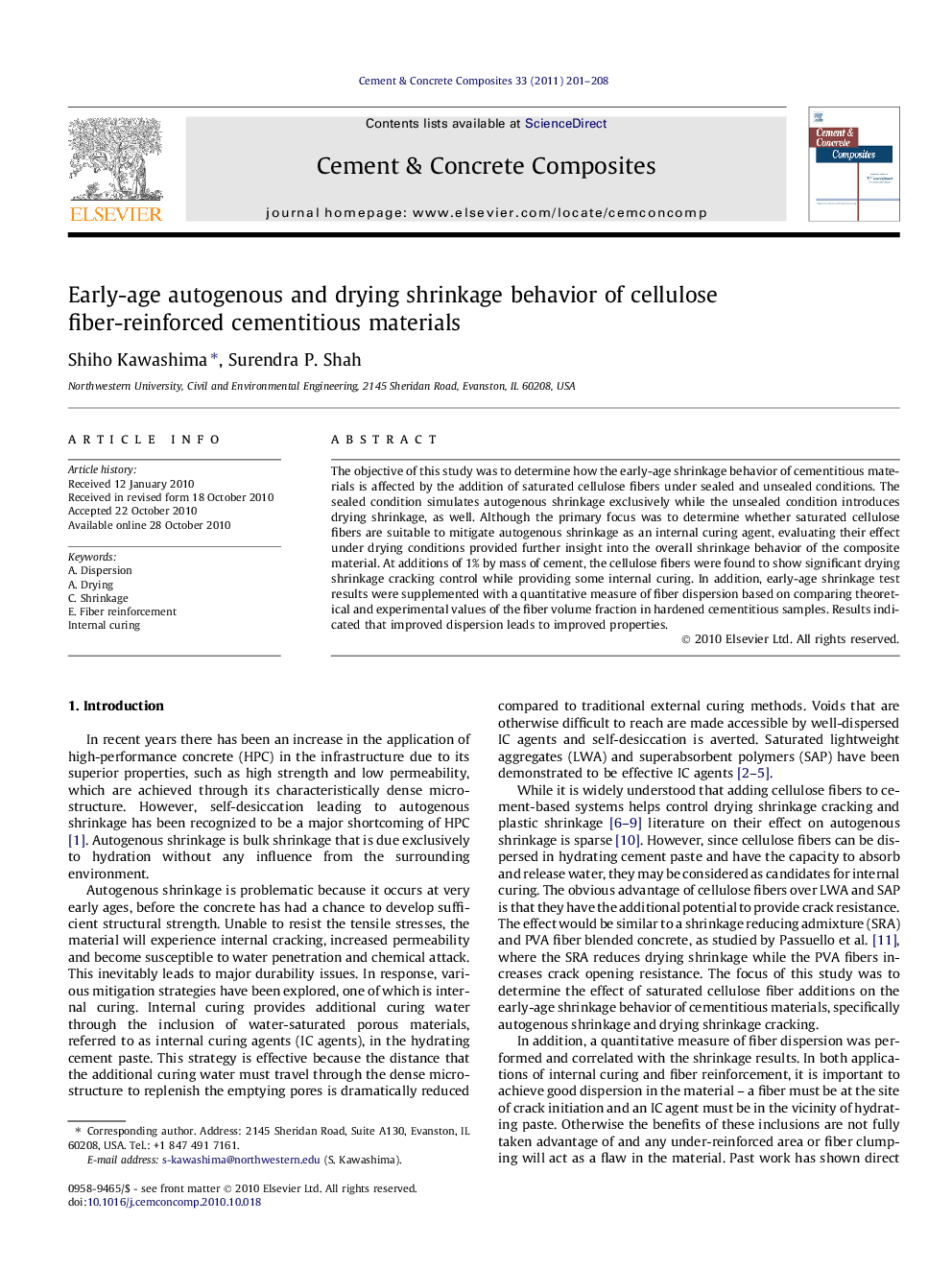| Article ID | Journal | Published Year | Pages | File Type |
|---|---|---|---|---|
| 10621910 | Cement and Concrete Composites | 2011 | 8 Pages |
Abstract
The objective of this study was to determine how the early-age shrinkage behavior of cementitious materials is affected by the addition of saturated cellulose fibers under sealed and unsealed conditions. The sealed condition simulates autogenous shrinkage exclusively while the unsealed condition introduces drying shrinkage, as well. Although the primary focus was to determine whether saturated cellulose fibers are suitable to mitigate autogenous shrinkage as an internal curing agent, evaluating their effect under drying conditions provided further insight into the overall shrinkage behavior of the composite material. At additions of 1% by mass of cement, the cellulose fibers were found to show significant drying shrinkage cracking control while providing some internal curing. In addition, early-age shrinkage test results were supplemented with a quantitative measure of fiber dispersion based on comparing theoretical and experimental values of the fiber volume fraction in hardened cementitious samples. Results indicated that improved dispersion leads to improved properties.
Related Topics
Physical Sciences and Engineering
Engineering
Industrial and Manufacturing Engineering
Authors
Shiho Kawashima, Surendra P. Shah,
